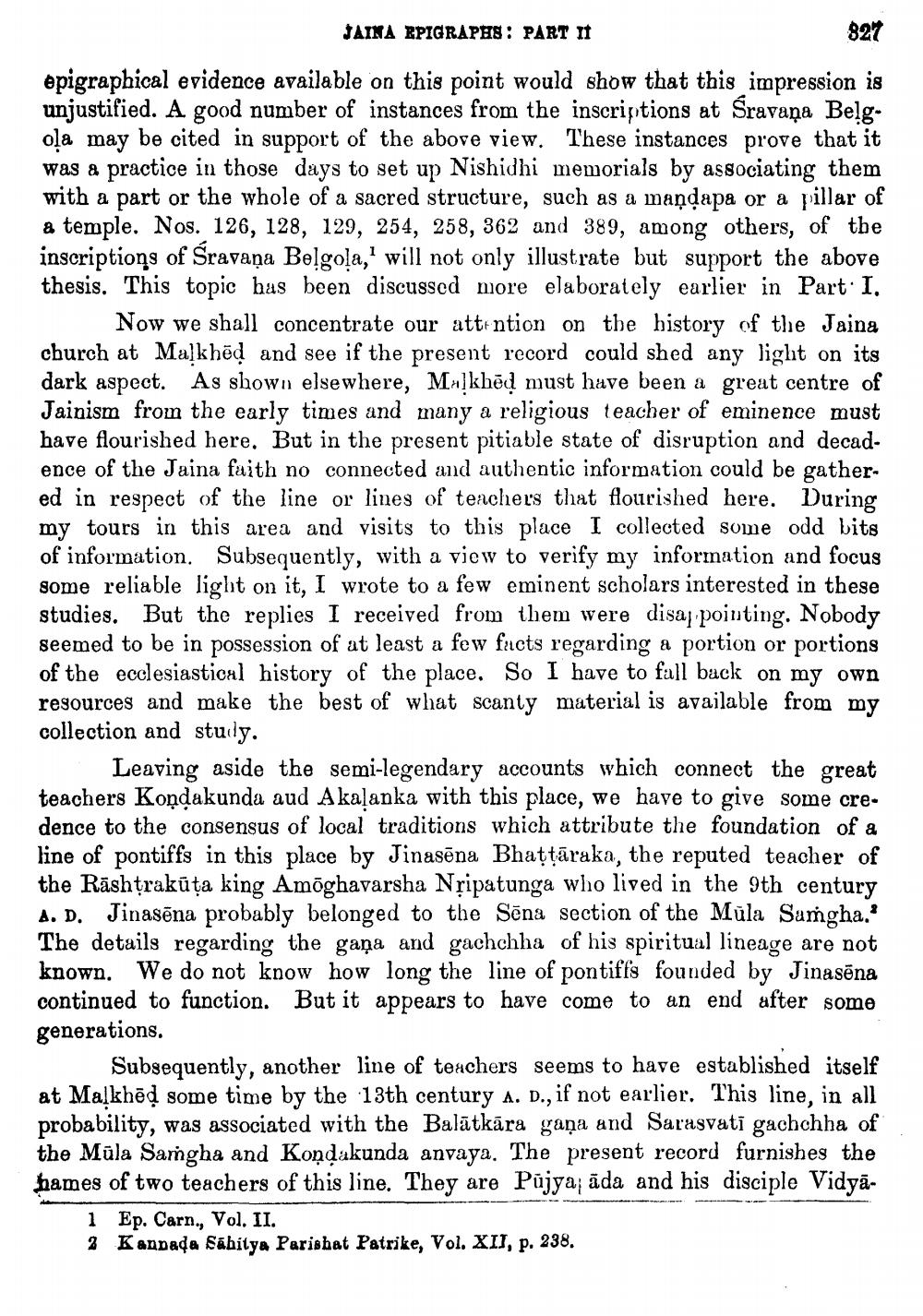________________
JAINA EPIGRAPHS : PART IT
827
epigraphical evidence available on this point would show that this impression is unjustified. A good number of instances from the inscriptions at Śravaņa Belg. oļa may be cited in support of the above view. These instances prove that it was a practice in those days to set up Nishidhi memorials by associating them with a part or the whole of a sacred structure, such as a maņdapa or a pillar of a temple. Nos. 126, 128, 129, 254, 258, 362 and 389, among others, of the inscriptions of Śravaņa Belgola,' will not only illustrate but support the above thesis. This topic has been discussed more elaborately earlier
Now we shall concentrate our attention on the history of the Jaina church at Malkhēd and see if the present record could shed any light on its dark aspect. As showu elsewhere, Mx]khēd must have been a great centre of Jainism from the early times and many a religious teacher of eminence must have flourished here. But in the present pitiable state of disruption and decadence of the Jaina faith no connected and authentic information could be gathered in respect of the line or lines of teachers that flourished here. During my tours in this area and visits to this place I collected some odd bits of information. Subsequently, with a view to verify my information and focus some reliable light on it, I wrote to a few eminent scholars interested in these studies. But the replies I received from them were disa pointing. Nobody seemed to be in possession of at least a few facts regarding a portion or portions of the ecclesiastical history of the place. So I have to fall back on my own resources and make the best of what scanty material is available from my collection and study.
Leaving aside the semi-legendary accounts which connect the great teachers Koņďakunda aud Akaļanka with this place, we have to give some cre. dence to the consensus of local traditions which attribute the foundation of a line of pontiffs in this place by Jinasēna Bhattāraka, the reputed teacher of the Rāshțrakūta king Amõghavarsha Nřipatunga who lived in the 9th century A.D. Jinasēna probably belonged to the Sēna section of the Mula Samgha.' The details regarding the gana and gachchha of his spiritual lineage are not known. We do not know how long the line of pontiffs founded by Jinasēna continued to function. But it appears to have come to an end after some generations.
Subsequently, another line of teachers seems to have established itself at Malkhēd some time by the 13th century A. D., if not earlier. This line, in all probability, was associated with the Balātkāra gana and Sarasvati gachchha of the Mūla Sangha and Kondakunda anvaya. The present record furnishes the hames of two teachers of this line. They are Pujya; āda and his disciple Vidyā
1 Ep. Carn., Vol. II. 2 Kannada Sahitya Parishat Patrike, Vol. XII, p. 238.




